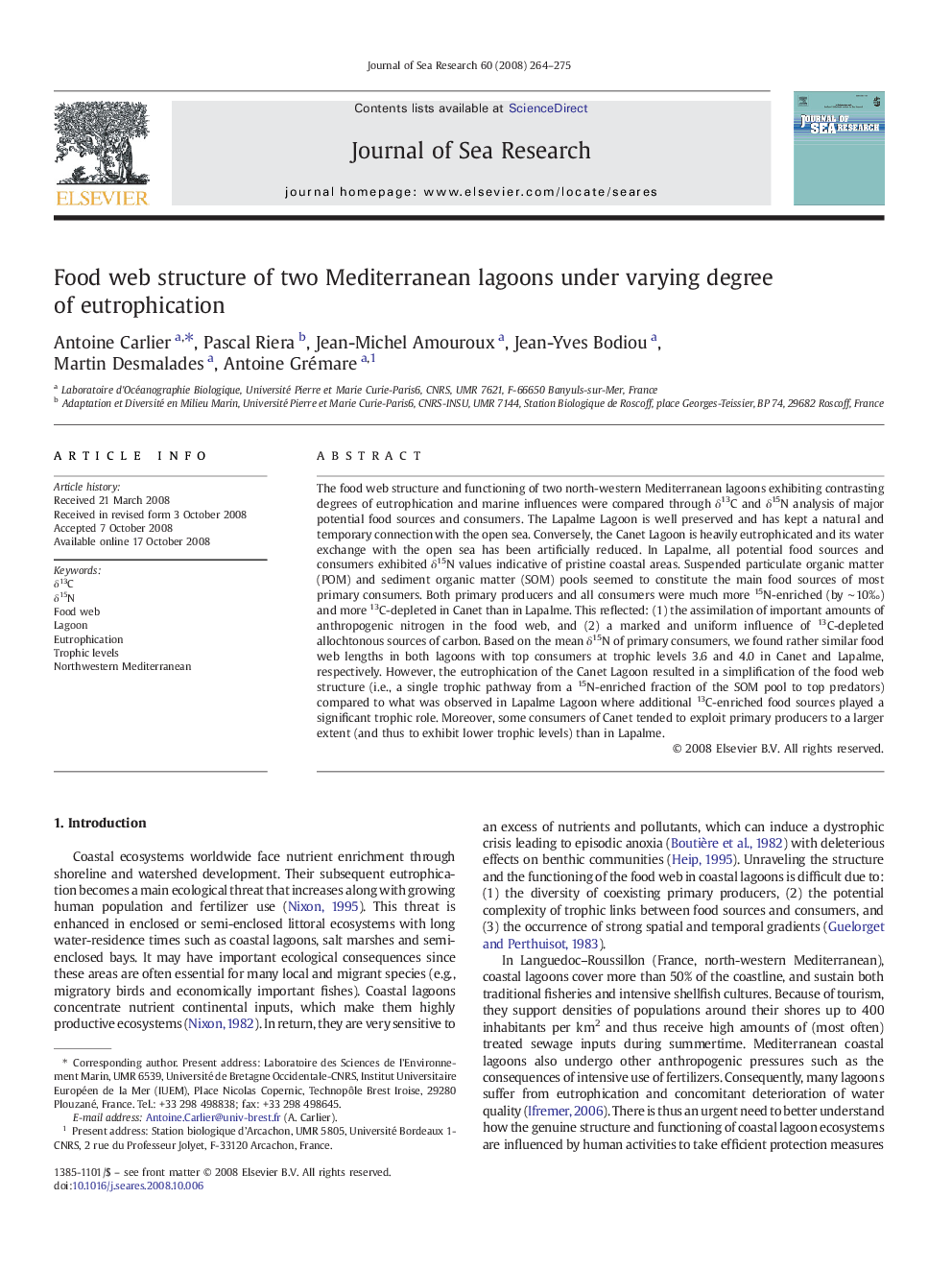| Article ID | Journal | Published Year | Pages | File Type |
|---|---|---|---|---|
| 4550309 | Journal of Sea Research | 2008 | 12 Pages |
The food web structure and functioning of two north-western Mediterranean lagoons exhibiting contrasting degrees of eutrophication and marine influences were compared through δ13C and δ15N analysis of major potential food sources and consumers. The Lapalme Lagoon is well preserved and has kept a natural and temporary connection with the open sea. Conversely, the Canet Lagoon is heavily eutrophicated and its water exchange with the open sea has been artificially reduced. In Lapalme, all potential food sources and consumers exhibited δ15N values indicative of pristine coastal areas. Suspended particulate organic matter (POM) and sediment organic matter (SOM) pools seemed to constitute the main food sources of most primary consumers. Both primary producers and all consumers were much more 15N-enriched (by ∼ 10‰) and more 13C-depleted in Canet than in Lapalme. This reflected: (1) the assimilation of important amounts of anthropogenic nitrogen in the food web, and (2) a marked and uniform influence of 13C-depleted allochtonous sources of carbon. Based on the mean δ15N of primary consumers, we found rather similar food web lengths in both lagoons with top consumers at trophic levels 3.6 and 4.0 in Canet and Lapalme, respectively. However, the eutrophication of the Canet Lagoon resulted in a simplification of the food web structure (i.e., a single trophic pathway from a 15N-enriched fraction of the SOM pool to top predators) compared to what was observed in Lapalme Lagoon where additional 13C-enriched food sources played a significant trophic role. Moreover, some consumers of Canet tended to exploit primary producers to a larger extent (and thus to exhibit lower trophic levels) than in Lapalme.
